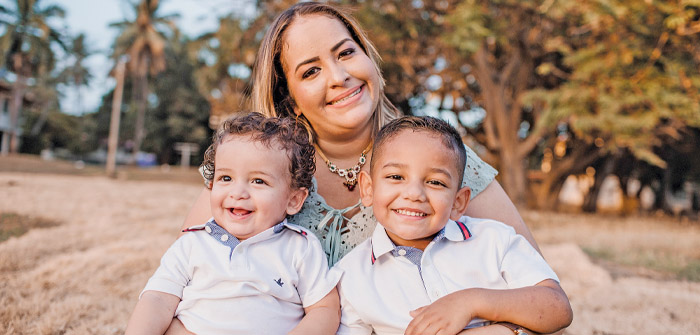(Telehealth services are a new and likely permanent addition to KIDS Center offerings | Photo courtesy of KIDS Center)
Looking ahead, local nonprofit agencies are hopeful and optimistic, and have amended forecasting as needed to reflect the changes brought on by the events of 2020.
At United Way of Central Oregon, Executive Director Ken Wilhelm says the plan is “to continue our focus of building resilience in individuals, families and communities throughout Central Oregon, specifically through the TRACEs (Trauma, Resilience and Adverse Childhood Experiences) initiative, as well as our grant processes.” He adds, “One important component of the TRACEs work is the emphasis on building diversity, equity and inclusion in all its activities. It is central to creating communities where everyone has the opportunity to thrive. Equity has become a greater focus for our organization and is becoming more evident in the way we do business and in our funding decisions.”
At Big Brothers Big Sisters of Central Oregon, Community Outreach Coordinator Bridget Albert says the organization is always moving forward, and is returning to the work of creating mentoring matches. “Children need a mentor now more than ever. This is an uncertain and scary time for children, and having a positive adult mentor with whom they can talk to, safely in person or virtually, can make a big impact,” she says. “Along with making one-to-one mentoring relationships for the youth of Central Oregon, our goal is to continue to provide our disproportionately impacted families with basic needs and resources during this crisis and the ones to follow.”
Juliana Williams, executive director of Boys & Girls Clubs of Bend, says that in moving forward, her organization will continue to adapt and create new program plans and models as needed. “Going forward, we have kept our programming flexible. Since K-3 had been scheduled to go back part time, we designed our program specifically to adapt to changing school schedules. We are prepared to continue to serve youth K through high school, and we will create our own hybrid schedule that allows youth to be in the club on the opposite days that they are in school.” She adds, “At this time, we are seeing that full days are the highest need families have. Once schools are able to go back full time, we look forward to going back to being an after-school program. But for now, this is the greatest need.”
In addition to keeping the Boys & Girls Clubs program flexible, Williams says the other priority now is seeking additional partnerships. “We have relied on partners, and are collaborating with the school district and other partners. Together, we have really developed this framework to meet the needs across the community. We are feeling really grateful to our community for stepping up and supporting such a critical need.” Although the funding the Clubs received has been helpful, Williams says her concern is long-term support and sustainability. “Receiving grant funds now is so helpful, but we want to be able to help our families in the long term. So we are continuing to look for partnerships.”
“We will continue to do what we can to help young people facing hurdles on the road to self-sufficiency in Central Oregon,” says J Bar J’s Marketing Creative Director Eva Gill. “Most of the youth in our programs are on the wrong side of the opportunity gap, and can’t afford to lose the services we provide.” The LOFT’s Maggie Wells adds that their goal is to continue to teach homeless and runaway youth the needed life skills. “We want to continue services the best we can in this new normal, and provide role modeling in how to navigate and deal with situations in this difficult time.”
“One of the things we’ve implemented as a necessity moving forward is providing mental health services virtually, via telehealth,” said KIDS Centers’ Gil Levy. “That’s something we had wanted to do before all this happened, particularly for those in rural or outlying areas where coming to Bend can be time intensive or difficult due to weather. We’d been talking about exploring this for a while, but found ourselves in a position to have to do it. It works well for a lot of our clients. It’s easy to log on from wherever you are, even on a phone.” He adds, “That’s been a change we will probably continue to offer in some capacity. As much as a lot of us are getting tired of the Zoom thing, if it’s something you really need, it’s nice to have it as an option.”
Younity’s Arlene Gibson said expanding the organization’s missions and delivery programs and taking advantage of the heightened partnering opportunities with community agencies are her priorities moving into the future. “More nonprofits are coming together as partners. There is lots of collaboration happening. These opportunities are part of our plans going forward,” she says. “We also have a new intern, a Political Science junior from the University of California Riverside, who is leading a core group of local students of color virtually and through phone calls.” This new diversity program is featuring prominent Black educators and community leaders, Gibson says, and they are producing a series of engaging educational courses. “Our youth are telling us that they want new, updated Black history programs. They are really passionate about this. We have an all-youth-lead diversity initiative. This is a new pathway for us.”
unitedwaycentraloregon.org • bbbsco.org • bgcbend.org • jbarj.org • kidscenter.org • younityus.org




